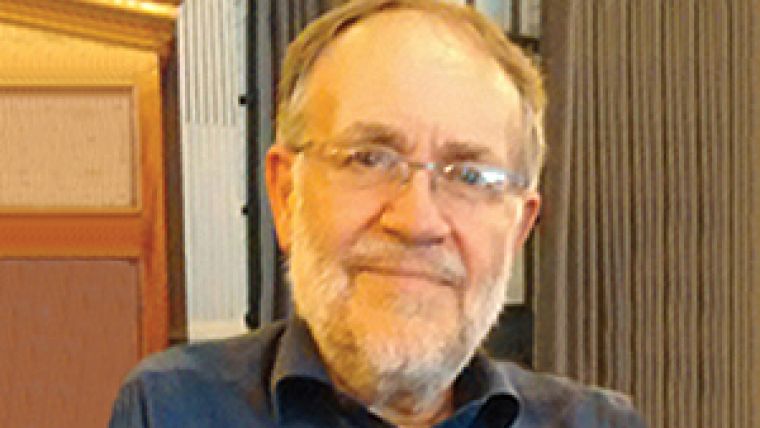Point Clouds, Deliverables, a New Era and Social Norms
This article was originally published in Geomatics World.
GW kick-starts the New Year with a strong focus on laser scanning and particularly point cloud software. Both topics that no doubt we will be returning to again during the coming year.
The arrival 15 years ago of the laser scanner was the start of a game-changing technology that has altered many aspects and applications of surveying. But as with Lidar and side-scan sonar, the vast datasets captured proved challenging right from the start. In the early days, the software often struggled and processing a day’s scanning often meant ten days or more back in the office to achieve a deliverable. Things have moved on since then but there remain problems around processing large datasets and merging scans to create high-resolution survey accurate 3D models, as we discovered when Richard Groom and I spoke to editorial board member and principal of Michael Gallie & Partners, Patrick Collins.
Our article (page 14) is the result of talking to many users in the industry, most of whom were reluctant to go on record. The good news is that for one developer at least, they’re on the case. Bill Wallace, of Leica Geosystems HDS software labs in San Ramone, in one of the most thoughtful responses we’ve ever published from an industry supplier, provides some reassuring balm.
Staying with laser scanning, Andrew Maltby tells us about his experience with a software package inspired by a leave-cutting ant (page 18) and Dr Emily Williams puts the Zeb1 handheld scanner through its paces for indoor surveys (page 20).
End of an Era but Heralds a New One
Last year marked the end of an era for Ordnance Survey GB as Dr Vanessa Lawrence heads of for new challenges on the world stage to promote global geospatial data management through the UN. GW talked to her (page 17) about her time at OSGB, which saw a radical change in the uptake of geospatial information across government that has gone from digital mapping across a few departments to widespread understanding that GI is the essential underpinning for most of what government does. But she leaves just as a number of data suppliers and OS partners are unhappy over licensing and copyright of OS data and have referred the mapping agency’s practices to the European Commission. Watch this space.
I commend all readers to study Richard Groom’s and James Kavanagh’s introduction (page 26) to the new edition of the RICS Measured Survey Specification. This brings a new era to measurement and is fundamental to the way surveyors work (or should); it has application around the globe. As Richard Groom says, it’s a product spec, not a method spec. In other words, it doesn’t tell you how to survey but sets out accuracies appropriate for different types of survey work. The new spec should quickly become every surveyor’s lodestar.
Technology continues to race ahead and too often far outstrips both our ability to set sensible social norms of behaviour and legal restraints. Nick Day reports in detail (page 24) on Google Glass. I have to confess to being very circumspect about some of that company’s products having endured their Nexus phone for the last year and its appalling software. An oversight saw me once again trying the “iSwim” app with a wholly predictable outcome. I am now trialling a Samsung Galaxy which is far more intuitive and with a user interface even I can understand!
To whet reader’s appetites and prompt ideas and contributions, below are the topics on the editorial schedule for 2015:
March/April: Beyond Surveying: opportunities for those with geomatics skills - The analytical and geospatial skills of surveyors are in demand in industries outside the traditional property sector such as Insurance, Risk Assessment and Environmental Monitoring.
May/June: DIY for UAVs or an end-to-end system? - GNSS, IMUs, multi-spectral, Lidar, imaging – there are a growing number of lightweight miniature sensors available for UAVs for those able to integrate them and create their own system. But is it better to rely on suppliers’ systems?
July/August: Data capture for infrastructure Asset Management - Today’s mobile terrestrial scanning and imaging systems can capture high volumes of data but processing and putting it into a GIS or facility management system can be a challenge. We take up the big data challenge again.
September/October: EDM & Optics vs. imaging and scanning - The industry’s major technology suppliers each have distinctly different approaches towards the evolution of the total station. Do we still need a telescope? Is photogrammetry the answer, or do we need a combination of technologies in one instrument?
November/December: Geomatics and Hydrography - The latest sensors, AUV platforms, navigation and positioning tools and systems.
This article was published in Geomatics World January/February 2015

Value staying current with geomatics?
Stay on the map with our expertly curated newsletters.
We provide educational insights, industry updates, and inspiring stories to help you learn, grow, and reach your full potential in your field. Don't miss out - subscribe today and ensure you're always informed, educated, and inspired.
Choose your newsletter(s)
























